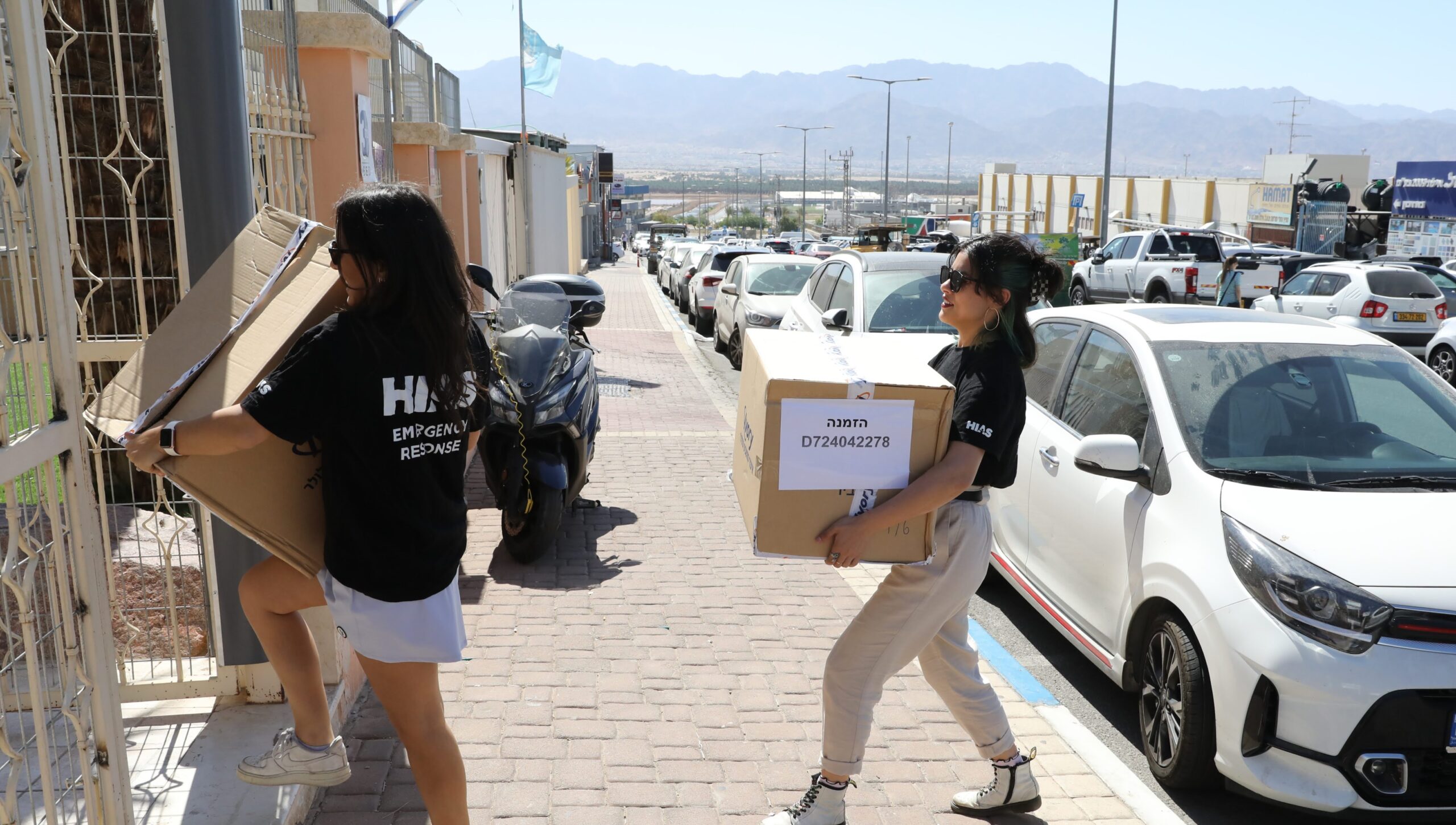
Since the October 7 attacks on Israel, the northern region of the country has come under increased drone, missile, and rocket attacks from Hezbollah, a terrorist group based in Lebanon. The Israeli government has ordered 43 Israeli communities located within three miles of the Lebanese border to evacuate, and several thousand additional residents have independently left their homes due to the escalating violence.
Kiryat Shmona, the northernmost city in Israel, home to approximately 24,000 residents and located just one mile from the Lebanese border, has faced severe upheaval over the past nine months. The city has been heavily bombarded by missiles and rockets, resulting in significant destruction and civilian injuries.
Since Kiryat Shmona serves as a regional center for healthcare, industry, commerce, and business services, its evacuation profoundly affects the entire northern Israel population. As fears mount of an Israel-Lebanon war and residents still cannot return home, HIAS Israel Emergency Response has intensified its support efforts, ensuring that both evacuees and those who remain in the city receive assistance.
"We strive not only to meet their physical needs but also to make the residents of Kiryat Shmona feel seen and cared for during these trying times.”Aely Haccoun, HIAS Israel Emergency Response Director
Helping Evacuees, Wherever They Are
Kiryat Shmona’s evacuees are scattered across six regions in Israel, spanning over 400 cities and towns. This widespread dispersion has strained efforts to provide consistent support across all aspects of life: education, welfare, employment, and community engagement.
The evacuation has inflicted severe financial strain on Kiryat Shmona’s residents. Many have lost their jobs due to the displacement, exacerbating economic instability in the community. For evacuees, the psychological impact of displacement is significant. Nine months away from home, filled with uncertainty and no clear timeline for return, has led to heightened stress, isolation, and a sense of hopelessness.
For A*, evacuated from Kiryat Shmona to Tel Aviv, dislocation continues a pattern that has persisted throughout his long life. As a child, he fled Tunisia, only to face the horrors of the Holocaust in Europe. In 1955, he immigrated to Israel, built a life, and raised a family in Kiryat Shmona, confident that he would never again have to flee.
“Yet, at 89, I find myself displaced once more due to war,” A said.
For students, there have been myriad challenges. “It’s really hard to be evacuated for so long, without any idea of when we will go back home,” said Segev, a 17-year-old boy evacuated from Kiryat Shmona. “We can’t study normally in this situation.” Some evacuated children have experienced increased school dropouts and behavioral challenges.
HIAS Emergency Response has focused particularly on certain communities, such as those Kiryat Shmona residents resettled in Eilat, a city at the southern tip of Israel, that because of their geographic isolation are at risk for not receiving assistance. The response team supplied educational materials to support children attending the temporary school, named “Orot haTzafon” (“Northern Lights”). “The generosity, caring, and consideration to help evacuees is not taken for granted,” students of Orot haTzafon told HIAS.org.
The team collaborates closely with partners like Beit Gesher and Dror, organizations that help displaced individuals all over Israel by providing mental health and psychosocial support, as well as carrying out protection efforts to entire families, including the establishment of over 65 safe spaces for children and youth alongside schools and summer programs for the coming months. “As the evacuation keeps extending, we keep expanding our programs and support,” explained Yotam Degani, CEO of Beit Gesher and a Kiryat Shmona municipal representative.
Supporting Those Who Remain
With much of Israel’s Northern region evacuated, the 1,500 residents left behind in Kiryat Shmona now face immense challenges in accessing basic necessities, healthcare, and transportation.
Those remaining — mostly elderly individuals struggling with self-care, but also large families and children with disabilities — are particularly vulnerable, especially since public transportation is nonexistent and local shops are closed. HIAS’ Emergency Response team has partnered with the Israeli organization Beit Lechem Yehuda to deliver aid packages directly to residents’ homes.
Aely Haccoun, the Emergency Response director, noted how staff quickly orchestrated complex logistical operations to distribute aid packages to 260 families.
“In moments of crisis, our shared humanity brings us together,” she said. “The collaboration between HIAS and Beit Lechem Yehuda is a reflection of our joint dedication to providing immediate relief to those impacted by the conflict. We strive not only to meet their physical needs but also to make the residents of Kiryat Shmona feel seen and cared for during these trying times.”
The emergency aid packages contained essential items such as food, fresh produce, and hygiene products, including soap, shampoo, conditioner, toothpaste, and sanitary pads. Each package is usually designed to sustain a family for about a week, but additional provisions of dry food were included as something of a safety net for two weeks, should the situation deteriorate further in northern Israel.
The actual delivery of aid to Kiryat Shmona is full of challenges, from navigating unsafe roads to ensuring the safety of the driver.
“In the context of escalation in the North, going out means being exposed to fires and rockets,” explained a leader from Beit Lechem Yehuda, who wished to remain anonymous. “Half of Kiryat Shmona is devastated. Most of the towns around are devastated. The area is almost uninhabitable, and delivering food is very dangerous. But that’s our job, and we are committed to those people.”
*Participant names have been changed to protect their identity.